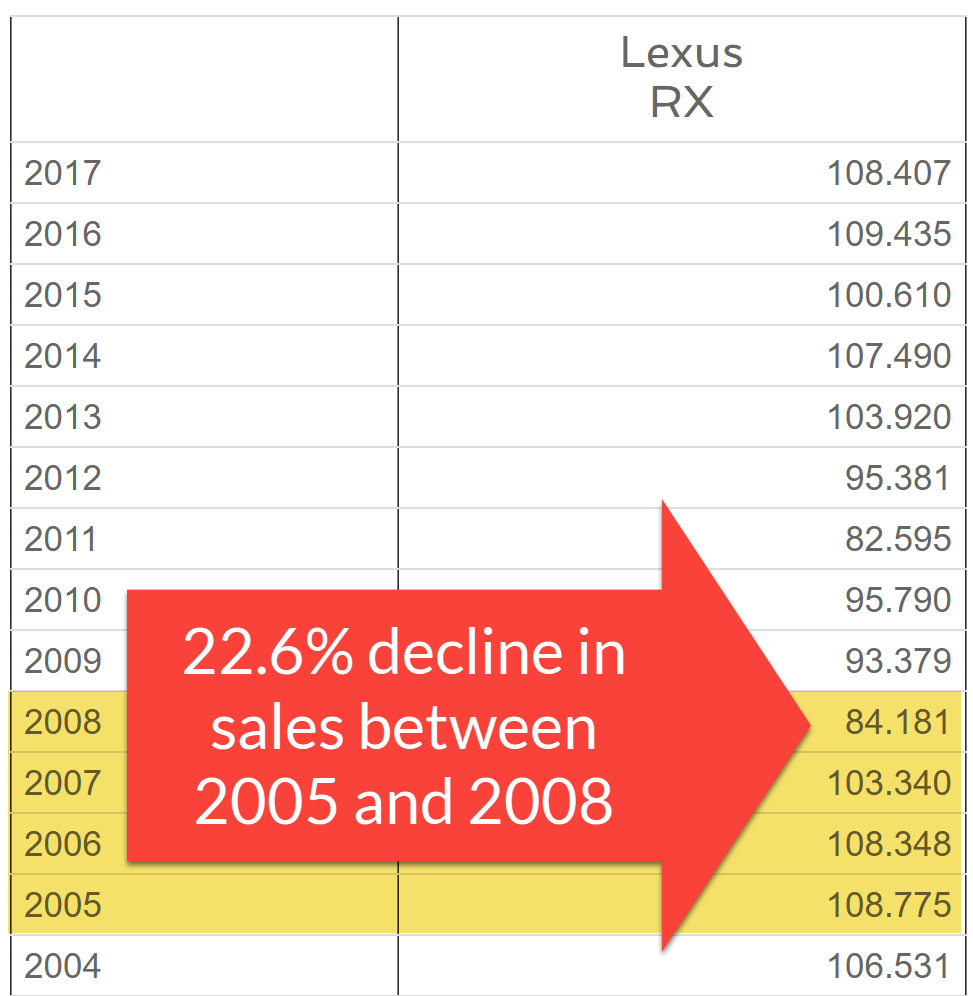How can I get my message to resonate?
Sometimes to do something right, it helps to know the wrong way, as well as WHY it’s wrong.
So, let’s take a step back…in time.
It’s still a common occurrence…even since things started to change.
You want people to know about your product…your service…your offering.
So what do you do? You talk about it!
- It’s front and center on your website.
- It’s the thing you lead with in new conversations.
- It’s the thing that starts to define you.
But the reality?
No one gives a shit about your product.
No one cares how great you are.
In the realm of creating demand for your offering—no matter what it is—these words have been true for a long time…but not forever.
In fact, it’s only been a bit more than a decade since things shifted. Since the buyer of your product…your service…your offering became empowered.
Since you lost control.
Back before June 2007, you could chest beat, talk about your whiz-bang components and features, and know you’d likely be successful following the age-old B-school marketing tenet of feature/benefit feature/benefit, feature/benefit.
And, the best place to see it all play out? Car ads. Yep. Advertisements for a main-stream, consumer market.
Hell…take a look at this unbelievably smarmy ad from the early 2000s and see for yourself.
(Plus, right underneath is the transcribed ad copy so you can follow along or just read it if you’d like.)
The Lexus RX has already earned the admiration of the world…
And now with the new RX350, it’s even more powerful.
It’s no wonder that for some, envy has turned into obsession.
Introducing the new 270 horsepower RX350…from Lexus.
Putting the world on notice…………yet again.
Back before 2007, this ad—and ads like it—killed. In fact, the approach of flaunting all the amazing attributes of your product…throwing them in the face of your audience…worked. For Lexus, this ad resulted in an added boost to brand recognition—anyone who watched tv in those days cannot help but remember the (then suave, now smarmy) voice of Lexus—and according to carsalesbase.com, 27.4% more sales!
But, something happened…
That was then. This is now.
Today, if you take that approach, you’ll experience what Lexus did with the RX model in a post June 2007 world.
- Take that approach today, and you are limiting interest in your product…your

- Take that approach today, and you miss out on what could be incredible growth.
- Take that approach today, and you risk being known for a commodity…even if what you have is truly special.
This is what Lexus saw as their RX sales numbers tanked as 2007 became 2008.
So, OK. Something happened. But what?
What could possibly explain the noticeable dip in sales of a trusted brand and a luxury SUV that already had earned the admiration of the world?
Messaging.
Messaging? Seriously, dude?
Yup. Messaging.
This is all messaging.
And, messaging has changed.
That’s not to say that all those cool features…all those amazing results your offering delivers are worthless. Far from it!
It just means that there’s a whole lot more to this enchilada!
Lemme show you what I mean. Check out this ad from 2016:
You can check on them.
You can worry about them.
You can even choose a car for them.
‘Honey are you OK?’
‘I’m OK.’
Love. [‘We’re OK.’]
It’s what makes a Subaru, a Subaru.
Same basic product as the Lexus—a car. An SUV in fact.
And yes, a Lexus has a different market and appeal than a Subaru. It’s likely anyone considering a Forester is not going to consider an RX350 and vice versa.
BUT…
What’s the point of that Lexus ad?
- The all new RX350…from Lexus. (Putting the world on notice yet again.)
What’s the point of this Subaru ad?
- The safety of your kids.
What do you care more about?
- Unless you’re the father of Cameron Frye, who do you love?
What do you care about the most?
While my own kids may argue this point with me (LOL), it’s almost certainly not a car.
And, just to show you that this is NOT just a Subaru thing…Just to show you it IS possible for Lexus to do something similar, check out this ad from 2016.
The premise sure isn’t safety, but I bet you’ll see quite a difference from the then-suave-and-now-smarmy “Putting the World on Notice” message…
What’s the point of this Lexus ad?
The life you’ve always dreamed of is attainable.
At this point, you might be thinking…
“Big deal. I don’t offer cars. I offer [FILL IN WHAT YOU SELL HERE].”
Or, “Yeah, this is B2C…I am in B2B. It’s different.”
Or even, “These are tv ads. I’m an early-stage founder. We don’t do tv ads.”
But alas…fine reader…none of that matters.
You probably certainly don’t offer cars, but your messaging gives your potential buyers a feeling…even if you can’t pinpoint it…even if you’re not entirely aware of it.
Because of reasons we’ll cover in mere moments, EVERYONE is now a consumer. Even those C-level execs buying $millions in enterprise software licenses. EVERYONE.
You may not do tv ads, but you communicate (or attempt to communicate) with a buying audience. This is true if you have a product, a service, or even just an idea. It’s business, baby!
- So what happened?
- What’s changed?
- And what can you do about it?
To answer these questions, we have to jump back to January 9, 2007.
On January 9, 2007, Steve Jobs introduced the iPhone.
It was going to change the world as we knew it.
- It was a phone.
- It was a music player.
- It was a camera.
And, it would give us access to instant knowledge, instant availability, and instant gratification.
It sounded remarkable.
And then, on June 27, 2007, something even MORE remarkable happened. The iPhone became available.
This one event changed us all.
All of a sudden, we had something we never fully had: instant access.
- Instant access to each other.
- Instant access to information.
- Instant access to anything we wanted…at any time…no matter where we happened to be.
I could tap into internet at home [and it was even relatively fast if I was fortunate to have broadband]…or dial you up on my land-line tethered to the wall in my house…or email you…or even instant message you in AIM when I was sitting at my computer.
Before then, we had access to information. I could use a more simple search on my flip-phone [IF I paid for data]…or what was more likely: jot down what I wanted to know, wait ‘til I got home, and look it up online.
So yeah…back then, we had access to anything we wanted…as long as that thing was in the general vicinity of where we happened to be in that moment….OR as long as we remembered what it was so we could look it up later.
The iPhone launch took smartphones down the path of becoming universal. They gave us immediate access to everything we could possibly want or need.
And, by getting immediate access, something happened to us.
We became more insular.
We became less reliant on others.
We became in control.
Consider this from a sales and marketing perspective.
What’s it mean for your ideal customer?
What’s it mean for you?
As a marketer…as a seller, you no longer call the shots.
It’s about your audience. Period. Another way to think about this?
No one cares about you.
- No one cares about your product.
- No one cares about your awards.
- No one cares about your opinion.
They care about themselves.
They care about how they feel.
They care about what they can accomplish.
They care about what they care about at every moment.
And it doesn’t matter if you sell to an individual consumer or a business.
EVERYONE IS A CONSUMER.
That includes the traditional consumer in the world of B2C, as well as every person involved in a buying decision (or even recommendation) in B2B.
EVERYONE IS A CONSUMER.
The most important thing is not your product. It’s not your company. It’s not your employees or partners or competitors. It’s the person who buys it…
EVERYONE IS A CONSUMER.
And, if you don’t recognize this in your message…your copy…your content…your sales pages…your conversations…your [FILL IN ANYTHING MARKETING-OR-SALES-RELATED HERE], you know what happens?
You lose any audience that doesn’t already know who you are…doesn’t already want what you sell…or hasn’t already decided to buy from you.
Think about that for a second.
That Lexus RX350 ad?
The one with the then-suave-now-smarmy announcer guy?
It’s fine…for a buying audience that already knows about Lexus and wants one.
- It’s not compelling to you unless you already are considering the purchase.
- It doesn’t stick with you, because you don’t care about the subject.
- It doesn’t move you because it has nothing to do with what you can accomplish.
But what about that Subaru ad?
For starters, it’s not about a car. It’s about your kids. And, better…about keeping them safe in case of an accident.
- It’s super compelling if you have young kids (which happens to be Subaru’s target market).
- It sticks with you because you care deeply about the subject.
- It moves you because it shows you what you can accomplish with their product.
It treats the ideal customer as the most important thing.
The ideal customer is the hero of the story.
If you needed any more of a push to ditch the “start with us” approach, consider Jon.
Jon is your ideal customer. Let’s say all those attributes you listed out when you were trying to figure out your audience? Jon has ’em all.
The other thing? Jon loves his dog. In fact, ‘Biggie’ is Jon’s second bull terrier mix.
Here’s a picture of Jon’s dog from growing up, Buddy—his first bull terrier mix—taken in 2006:
And here’s a picture of Jon’s dog Biggie from last Thursday:
And these examples are EVERYWHERE.
Vacation pictures:
Concert pictures:
Tourist pictures:
What’s it about?
What’s the subject?
What’s the most important thing in all of these pictures?
Like I said, this is NOT all about car ads.
It’s any initial impression of your brand.
It’s about those first few impressions. These can be:
- Blog posts
- Social posts
- Facebook ads
- Web headlines
- Any early-stage content
If you focus your early messages on you and not your audience, you’re living in 2006.
And, worse? You’re costing yourself sales.
So what can you do to make sure you don’t slip back in time? And, how can you create a message that has a better chance of resonating?
I’m glad you asked! (-:
I created a quick checklist with three questions to help you make your message resonate with your target audience.
Sign up and I’ll send it straight to your inbox.
Then, keep it handy next time you’re creating something you want to resonate with your target audience.
If you keep these questions in mind, your message has a better chance of hitting the mark!
I wish you a hearty #BOOMshockalocka…Catch you soon!
Sign up, click that button, and check your inbox!
You'll get the checklist right away, followed up with occasional tips to help you make your message resonate.
